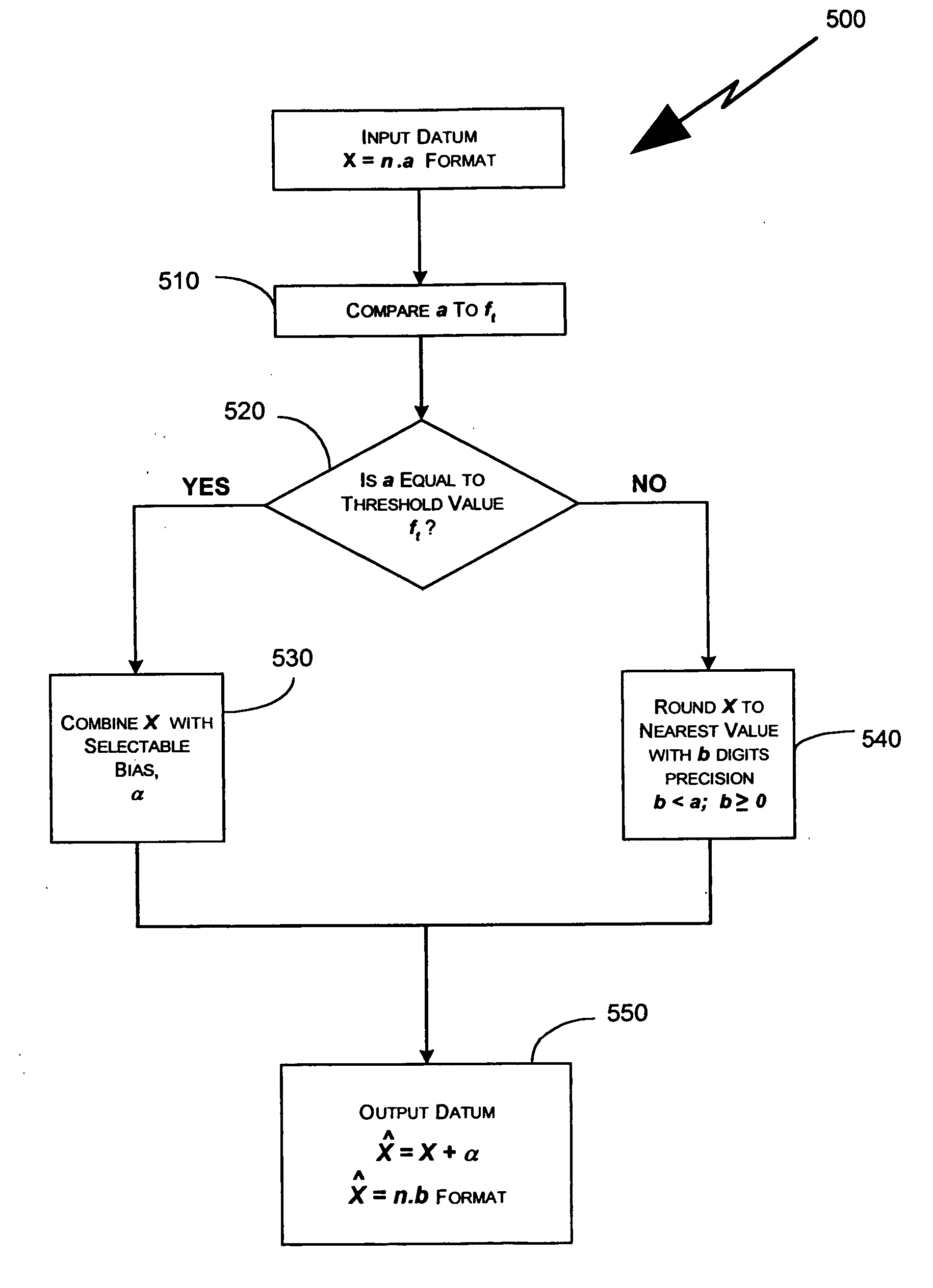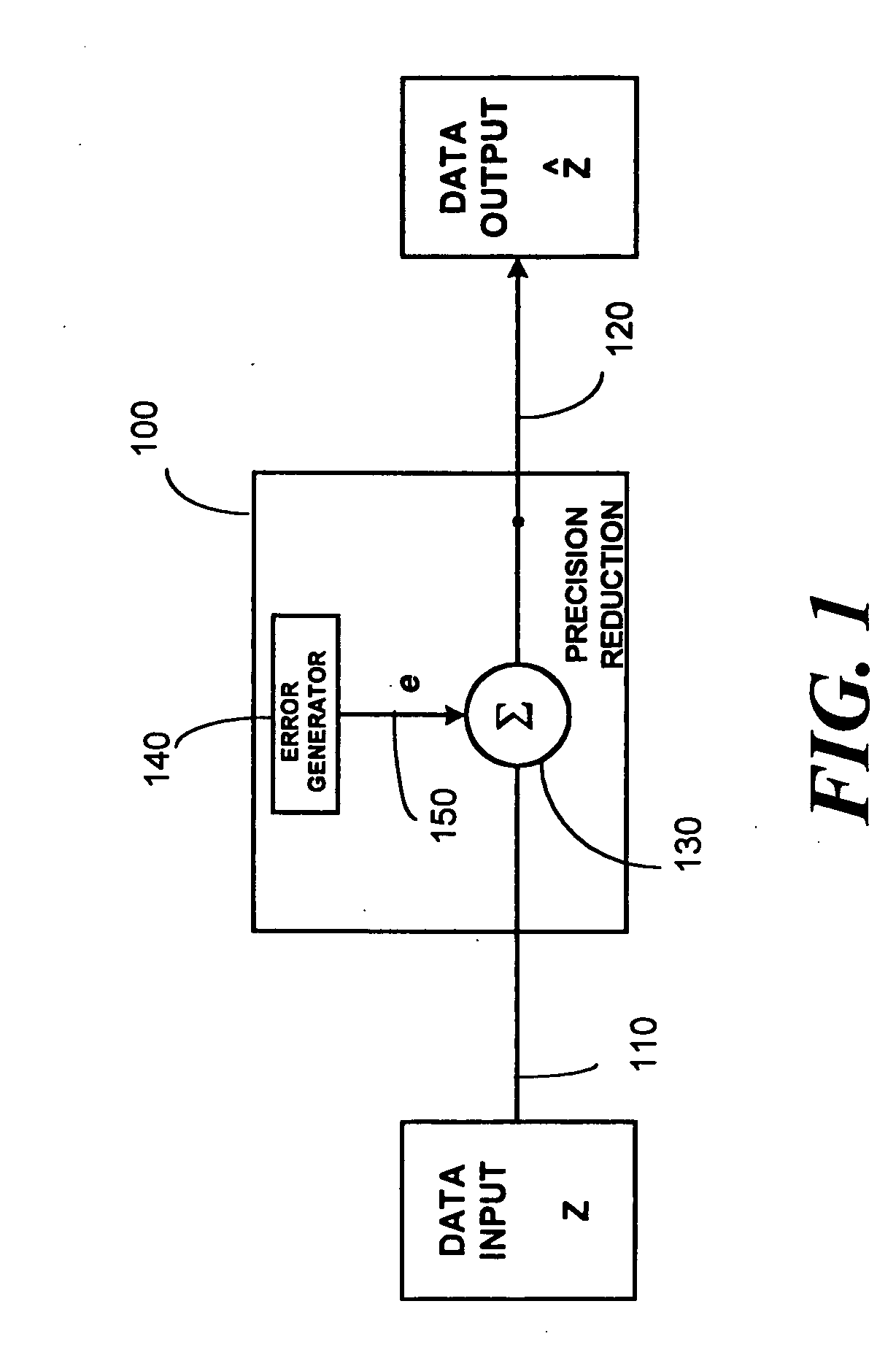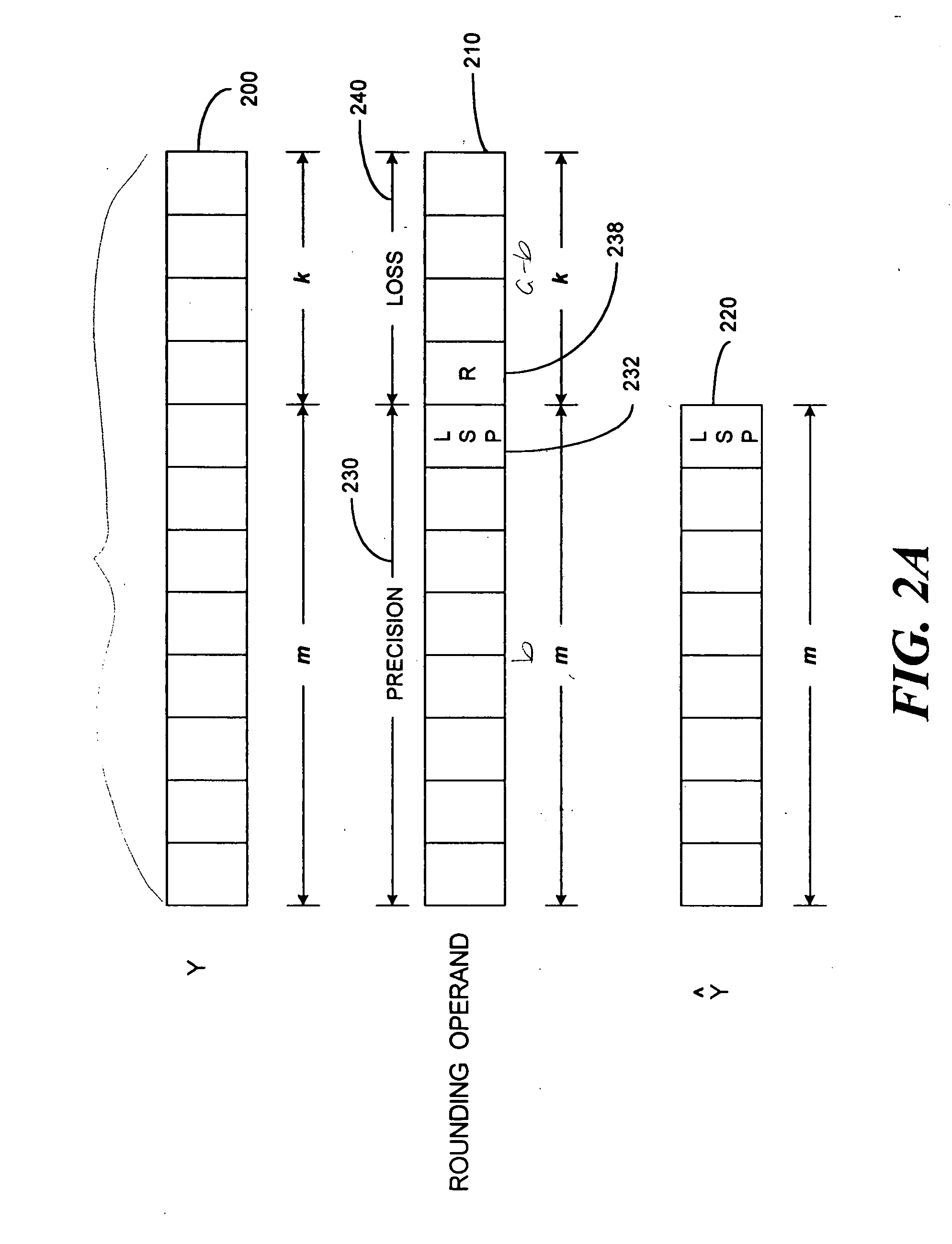Apparatus and method for reducing precision of data
a data and approximation technology, applied in the field of approximation and data precision reduction, can solve the problems of reducing the accuracy of fixed point operations, reducing the accuracy of quantizing small numbers, and impractical floating point operations for high-speed applications, so as to reduce the precision of input signals, and reduce the error of rounding.
- Summary
- Abstract
- Description
- Claims
- Application Information
AI Technical Summary
Benefits of technology
Problems solved by technology
Method used
Image
Examples
Embodiment Construction
[0029] The present invention includes methods and apparatus that reduce the precision of an input signal value having a first precision to an output signal having a second, lesser precision in a manner that greatly reduces, or substantially cancels, a precision reduction error signal typically inherent in prior art rounding techniques. By combining the input signal with a selectable bias, responsive to a preselected threshold rounding state, the rounding methods and apparatus according to the present invention provide an output signal that is substantially free of precision reduction error bias. In addition, where it is desired to produce a preselected signal offset, values for the selectable bias can be assigned to generate the offset. Such a signal offset may be useful to compensate for a undesirable pre-existing input signal bias, including correcting for precision reduction error biases injected during previous precision reduction operations. Also, it may be useful to impart an ...
PUM
 Login to View More
Login to View More Abstract
Description
Claims
Application Information
 Login to View More
Login to View More - R&D
- Intellectual Property
- Life Sciences
- Materials
- Tech Scout
- Unparalleled Data Quality
- Higher Quality Content
- 60% Fewer Hallucinations
Browse by: Latest US Patents, China's latest patents, Technical Efficacy Thesaurus, Application Domain, Technology Topic, Popular Technical Reports.
© 2025 PatSnap. All rights reserved.Legal|Privacy policy|Modern Slavery Act Transparency Statement|Sitemap|About US| Contact US: help@patsnap.com



